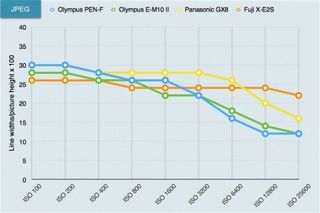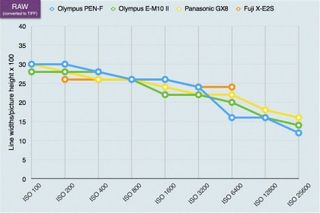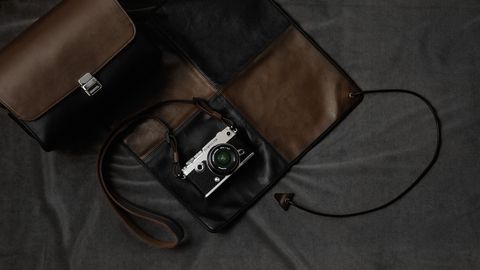Why you can trust TechRadar
We measure resolution using an industry-standard test chart photographed in laboratory conditions. We take test shots across a wide ISO range and shooting both JPEG and raw images.
We also compare the camera's lab test data with the test results of three of its main rivals. For the PEN-F we've chosen the following three cameras:
- Olympus OM-D E-M10 II: The enhanced version of Olympus's entry-level DSLR-style camera has the older 16-megapixel sensor but offers great value for money.
- Panasonic GX8: This is the first Panasonic CSC to use the new 20-megapixel Four Thirds sensor and, like the PEN-F, is a rangefinder-style camera aimed at discerning enthusiasts.
- Fuji X-E2S: The Fuji has a larger APS-C sized X-trans sensor than the others, but it otherwise aimed at a similar audience, with a retro-themed rangefinder-style body.

JPEG resolution analysis: The PEN-F's 20-megapixel sensor gives it a useful boost in resolution over the 16-megapixel E-M10 II, and both beat the Fuji X-E2S up to around ISO 1600. The Panasonic GX8, however, is the best of the lot from ISO 800 onwards, right up until ISO 6400, where the Fuji X-E2S catches up.

Raw (converted to TIFF) resolution analysis: The raw resolution figures are much closer, and although it's difficult to pick at clear winner, the PEN-F is consistently at or near the top.

Rebel Moon Part 2 isn't the epic sci-fi sequel we hoped for – here are 3 better sagas to stream

Apple is exploring removable batteries for iOS devices – and I think AirPods need it most

'A whole new generation of displays': researchers develop RGB LED out of miracle material perovskite, paving the way for self sensing, solar powered displays — but its hour-long service life needs to be improved first
